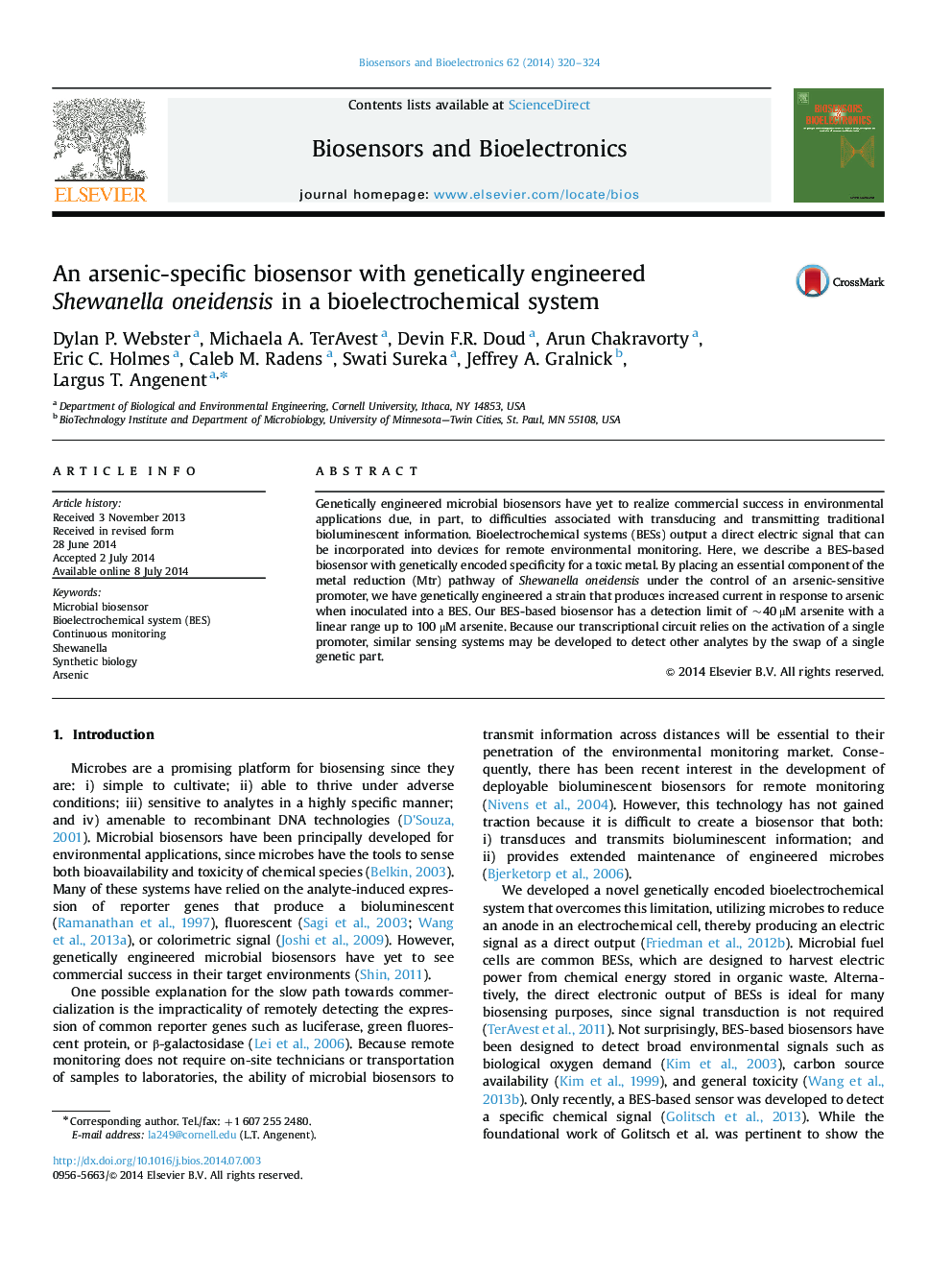| Article ID | Journal | Published Year | Pages | File Type |
|---|---|---|---|---|
| 7233264 | Biosensors and Bioelectronics | 2014 | 5 Pages |
Abstract
Genetically engineered microbial biosensors have yet to realize commercial success in environmental applications due, in part, to difficulties associated with transducing and transmitting traditional bioluminescent information. Bioelectrochemical systems (BESs) output a direct electric signal that can be incorporated into devices for remote environmental monitoring. Here, we describe a BES-based biosensor with genetically encoded specificity for a toxic metal. By placing an essential component of the metal reduction (Mtr) pathway of Shewanella oneidensis under the control of an arsenic-sensitive promoter, we have genetically engineered a strain that produces increased current in response to arsenic when inoculated into a BES. Our BES-based biosensor has a detection limit of ~40 μM arsenite with a linear range up to 100 μM arsenite. Because our transcriptional circuit relies on the activation of a single promoter, similar sensing systems may be developed to detect other analytes by the swap of a single genetic part.
Keywords
Related Topics
Physical Sciences and Engineering
Chemistry
Analytical Chemistry
Authors
Dylan P. Webster, Michaela A. TerAvest, Devin F.R. Doud, Arun Chakravorty, Eric C. Holmes, Caleb M. Radens, Swati Sureka, Jeffrey A. Gralnick, Largus T. Angenent,
